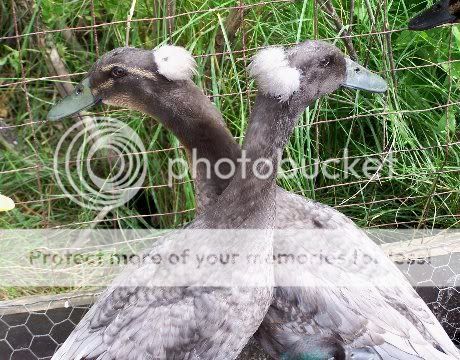- Jan 31, 2010
- 250
- 10
- 189
In juvenile plumage he is a dusky. He looks to be light phase & that should be the case in a dusky bird with partial/faint neck ring & claret breast. If a dark phase dusky then he shouldn't show evidence of these traits but I guess there are always exceptions? He also looks to have the lighter blue/grey of a homozygous blue bird, but difficult to tell from pics (light phase dusky + homozygous blue = apricot) & (dark phase dusky + hetero/homo blue = buff/blonde). You could try looking under his wing & if pigmentation is there then dusky he should be, even in the presence of light phase genes (not lih). If the bird has white feather then possibly split for wild-type mallard ie md/M+, but I would think if he had mallard (M+) in him there would be some evidence ie facial marking in juvenile/eclipse plumage, white underwing. He looks like a true dusky to me with hetero/homo blue. Is his head blue or black, hard to tell from a couple of those pics but in all speculum looks blue?
He does look very similar to a pic of a bird I have (Colour Breeding in Domestic Ducks, Ashton, p. 46) that is reported to be a light phase dusky, including reduced/fading bib, although your bird is a little cleaner looking. As CityChicker has said, very difficult to tell due to colour similarity of different birds with differing gene mixes (not to mention variations in those birds that are genetically alike).
But he is a pretty boy

He does look very similar to a pic of a bird I have (Colour Breeding in Domestic Ducks, Ashton, p. 46) that is reported to be a light phase dusky, including reduced/fading bib, although your bird is a little cleaner looking. As CityChicker has said, very difficult to tell due to colour similarity of different birds with differing gene mixes (not to mention variations in those birds that are genetically alike).
But he is a pretty boy












